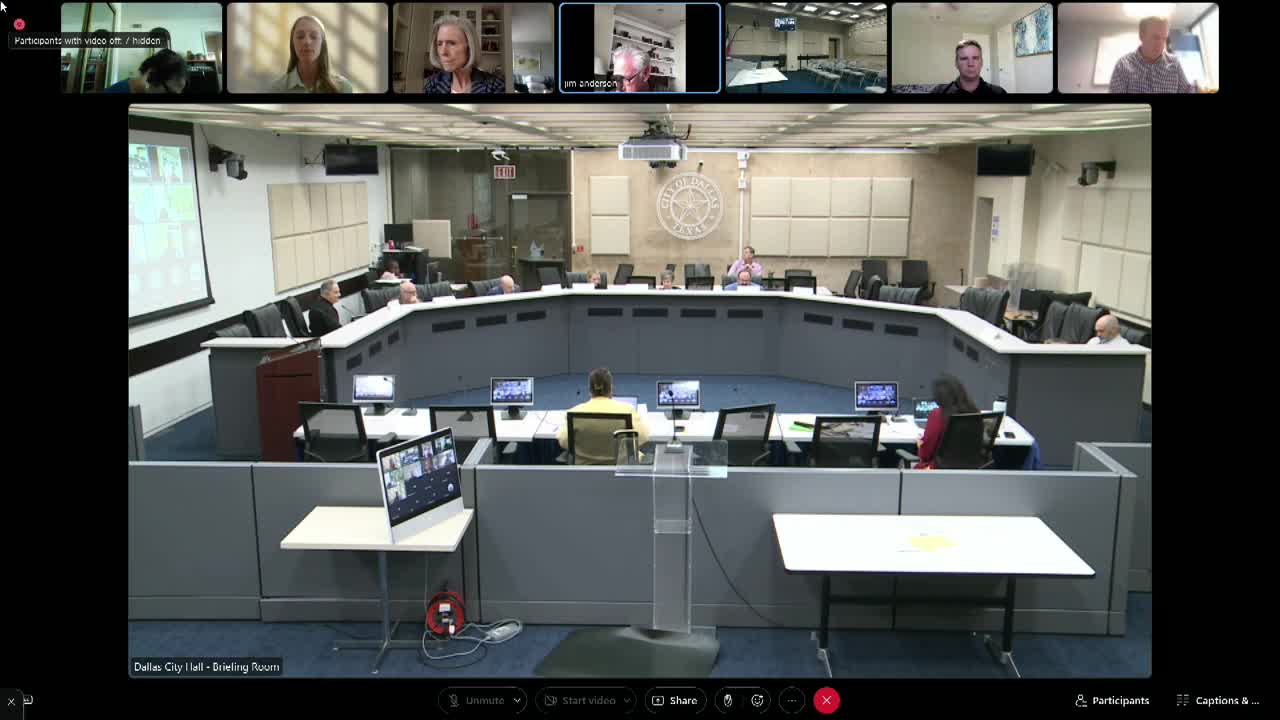Commission Denies Certificate for Rear Addition in Winnetka Heights Historic District
August 04, 2025 | Dallas, Dallas County, Texas
This article was created by AI summarizing key points discussed. AI makes mistakes, so for full details and context, please refer to the video of the full meeting. Please report any errors so we can fix them. Report an error »

In a recent meeting held on August 4, 2025, the Dallas City Council engaged in significant discussions regarding the preservation and compatibility of historic structures within the city. The primary focus was on a proposed modification to a non-contributing building in a historic district, which sparked a debate about its architectural compatibility with the surrounding area.
Commissioner Anderson emphasized the importance of ensuring that any changes made to the building enhance its compatibility with the district. He noted that the proposed improvements would make the structure fit better within the neighborhood context. However, questions arose regarding the building's classification as non-contributing, with Commissioner Preziosi seeking clarification on the criteria that led to this designation. The lack of definitive documentation regarding the building's historical significance was highlighted, suggesting that its age may have played a role in its classification.
Further discussions revealed concerns about specific architectural features of the building. One commissioner raised issues with the proposed siding and gable vent, arguing that these elements were inappropriate for the building's front elevation. The debate underscored the complexities involved in maintaining the historical integrity of structures while accommodating modern updates.
Ultimately, the council voted on the proposed changes, with the motion passing despite some dissenting opinions. The approval indicates a willingness to work with the applicant to ensure that the modifications align with the district's preservation standards.
In addition to this discussion, the council also reviewed a request for a certificate of appropriateness for a rear addition to a structure in the Winnetka Heights Historic District. Staff recommended denying the request, citing concerns about the addition's compatibility with the existing architectural characteristics of the main structure. This decision reflects the council's commitment to preserving the unique historical fabric of Dallas neighborhoods.
As the city continues to navigate the balance between development and preservation, these discussions highlight the ongoing challenges faced by local officials in maintaining the character of historic districts while accommodating the needs of property owners. The outcomes of these deliberations will likely shape future policies and practices regarding historic preservation in Dallas.
Commissioner Anderson emphasized the importance of ensuring that any changes made to the building enhance its compatibility with the district. He noted that the proposed improvements would make the structure fit better within the neighborhood context. However, questions arose regarding the building's classification as non-contributing, with Commissioner Preziosi seeking clarification on the criteria that led to this designation. The lack of definitive documentation regarding the building's historical significance was highlighted, suggesting that its age may have played a role in its classification.
Further discussions revealed concerns about specific architectural features of the building. One commissioner raised issues with the proposed siding and gable vent, arguing that these elements were inappropriate for the building's front elevation. The debate underscored the complexities involved in maintaining the historical integrity of structures while accommodating modern updates.
Ultimately, the council voted on the proposed changes, with the motion passing despite some dissenting opinions. The approval indicates a willingness to work with the applicant to ensure that the modifications align with the district's preservation standards.
In addition to this discussion, the council also reviewed a request for a certificate of appropriateness for a rear addition to a structure in the Winnetka Heights Historic District. Staff recommended denying the request, citing concerns about the addition's compatibility with the existing architectural characteristics of the main structure. This decision reflects the council's commitment to preserving the unique historical fabric of Dallas neighborhoods.
As the city continues to navigate the balance between development and preservation, these discussions highlight the ongoing challenges faced by local officials in maintaining the character of historic districts while accommodating the needs of property owners. The outcomes of these deliberations will likely shape future policies and practices regarding historic preservation in Dallas.
View full meeting
This article is based on a recent meeting—watch the full video and explore the complete transcript for deeper insights into the discussion.
View full meeting
